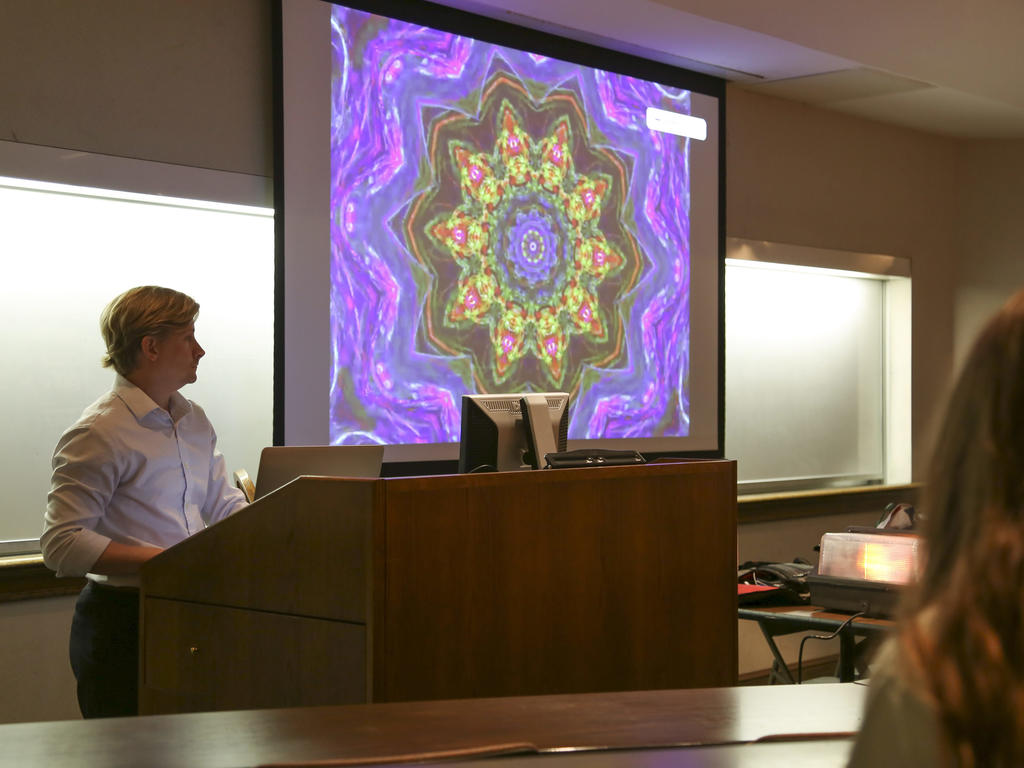To a person who is color blind (or color vision deficient), orange carrots may look brown or colored pills and medicines may be indistinguishable. Challenges also can exist when selecting clothing, working in the garden, or even just trying to decide if a banana is ripe or chicken is undercooked. There are different types and severities of color blindness; some people have difficulty distinguishing between red and green or blue and purple, and in extreme cases, there are those who can't see color at all. People who are typically red-green color blind, for example, may not be able to tell which light is green and which is red, but they can tell which is brighter.
Although most people with color vision deficiency learn to adapt, Dr. Jason Haberman, assistant professor of psychology at Rhodes, gives students in his Psychology 216-Sensation and Perception course an opportunity to temporarily experience color blindness.
He blocks out all natural light in the classroom and uses two sodium lights to emulate an extreme example of the phenomenon of color blindness. Students see objects he has brought to class—paintings, food, clothing—in monochromatic shades.
Says Haberman, “The numbers vary slightly, but one in 20 men and one in 400 women are red-green color blind. The sodium light simulates what it is like to be cortically color blind—that is absence of all color perception, not just red/green.”
“Experiencing color blindness was a very unique experience,” says psychology and education major Laura Hernandez ’17, who recently participated in the simulation activity. “Although it may seem like a simple demonstration, I think I can speak for the class when I say we left with a newfound appreciation for the ability to see color. It is something we all take for granted, but being color blind for 50 minutes allowed us to be able to literally see the perspective of people who are color blind.”
